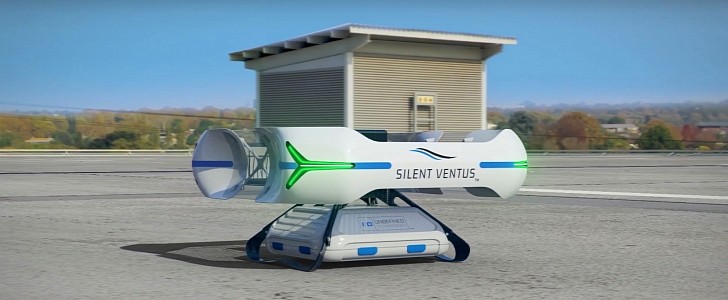Back in May, Undefined Technologies introduced the world to its quiet, Silent Ventus drone, whose goal is to make itself heard on the market by making less noise than its competitors. Now the Florida-based company is back with fresh news and footage, including one that gives us a peek into the lab where the aircraft is developed.
According to a NASA study quoted by Undefined Technologies, one of the most disliked things about drones is the noise they generate, which is deemed even more annoying than the one made by road traffic. It is why the U.S. only allows for noise levels between 50 dB and 70 dB, in both commercial and residential areas. The problem is that most commercial delivery drones on the market today are louder than that, with a noise footprint between 85 dB and 96 dB.
What Undefined Technologies promises to bring to the table is a fully electric drone with minimum noise signature. The so-called Silent Ventus, which is the product the company has been working on for some years now, claims it can generate noise levels that are below 70 dB. The aircraft is powered by ion propulsion and doesn’t use propellers.
Undefined Technologies has continuously improved its silent drone, starting with prototypes that could only stay in the air for 25 seconds and generated 90 dB and gradually managing to both reduce the noise level and increase the flight time.
The latest video published recently on the company’s YouTube channel shows us the Silent Ventus in action, succeeding to achieve a flight time of four and a half minutes and noise levels below 75 dB. It was a significant milestone to hit, but Undefined Technologies says it has even bigger goals than that, aiming to achieve 15-minute flights and noise levels below 70 dB by the end of 2023.
In order to increase the drone’s flight time to four and a half minutes, advancements had to be made in the chemical composition of the batteries that can now provide higher energy densities, as explained by Thomas Benda Jr, Lead Aerospace Engineer at Undefined Technologies. He also added that this improvement is part of the company’s efforts to target lighter weights.
Undefined Technologies also gave us a peek into the lab where all the magic happens, explaining how its proprietary technology works. The technology generates an ion cloud surrounding the drone, which then pushes air downward to provide upper lift.
The serial production of the silent drone should kick off in 2024.
You can see both the Undefined Technologies lab and the latest test flight of the Silent Ventus drone in the videos below.
What Undefined Technologies promises to bring to the table is a fully electric drone with minimum noise signature. The so-called Silent Ventus, which is the product the company has been working on for some years now, claims it can generate noise levels that are below 70 dB. The aircraft is powered by ion propulsion and doesn’t use propellers.
Undefined Technologies has continuously improved its silent drone, starting with prototypes that could only stay in the air for 25 seconds and generated 90 dB and gradually managing to both reduce the noise level and increase the flight time.
The latest video published recently on the company’s YouTube channel shows us the Silent Ventus in action, succeeding to achieve a flight time of four and a half minutes and noise levels below 75 dB. It was a significant milestone to hit, but Undefined Technologies says it has even bigger goals than that, aiming to achieve 15-minute flights and noise levels below 70 dB by the end of 2023.
In order to increase the drone’s flight time to four and a half minutes, advancements had to be made in the chemical composition of the batteries that can now provide higher energy densities, as explained by Thomas Benda Jr, Lead Aerospace Engineer at Undefined Technologies. He also added that this improvement is part of the company’s efforts to target lighter weights.
Undefined Technologies also gave us a peek into the lab where all the magic happens, explaining how its proprietary technology works. The technology generates an ion cloud surrounding the drone, which then pushes air downward to provide upper lift.
The serial production of the silent drone should kick off in 2024.
You can see both the Undefined Technologies lab and the latest test flight of the Silent Ventus drone in the videos below.









